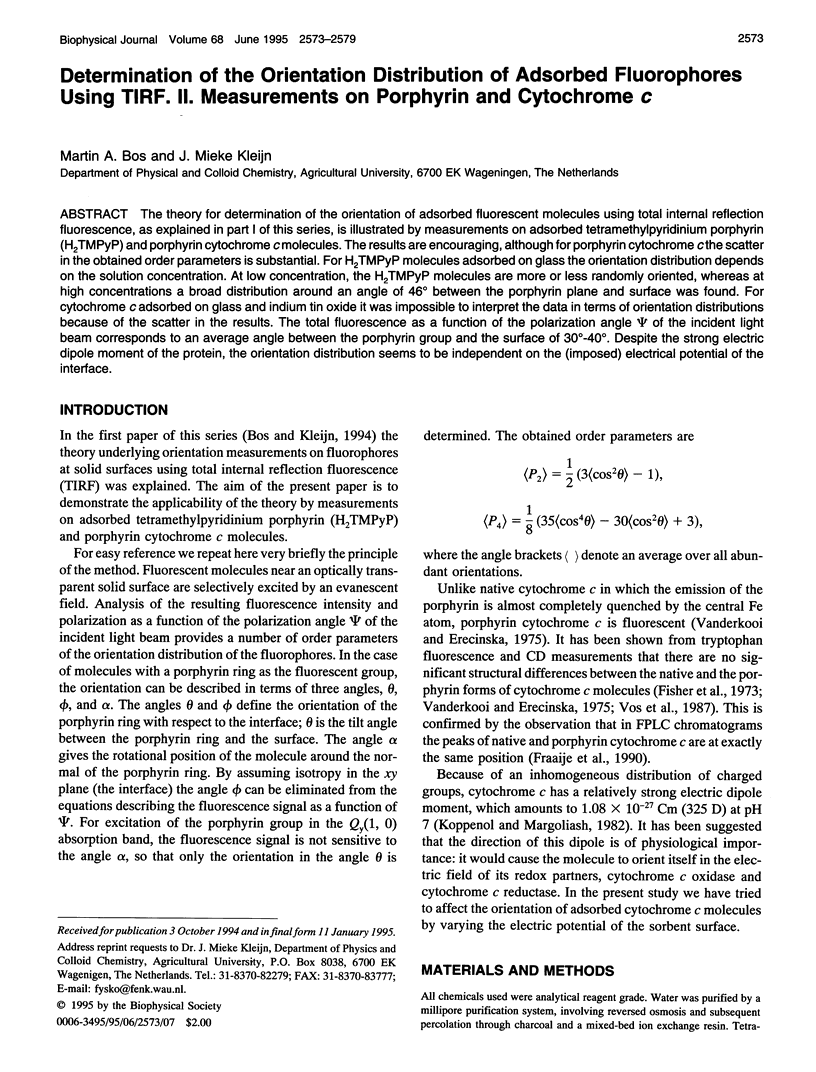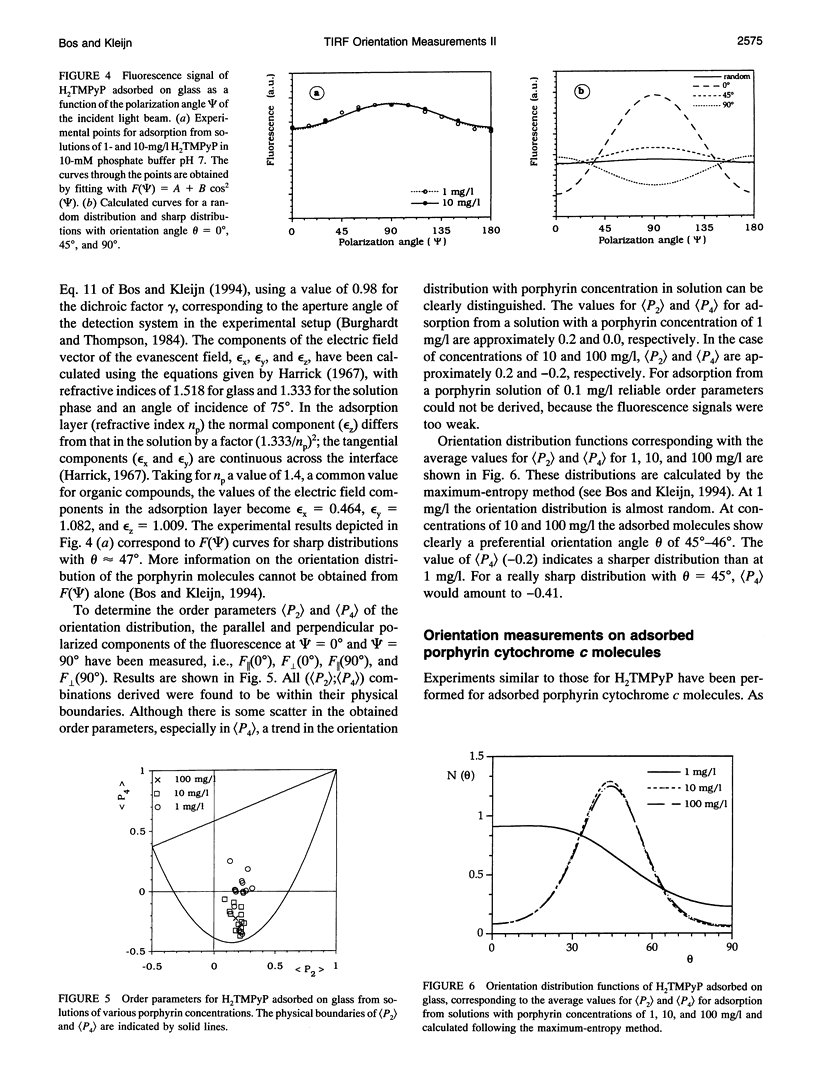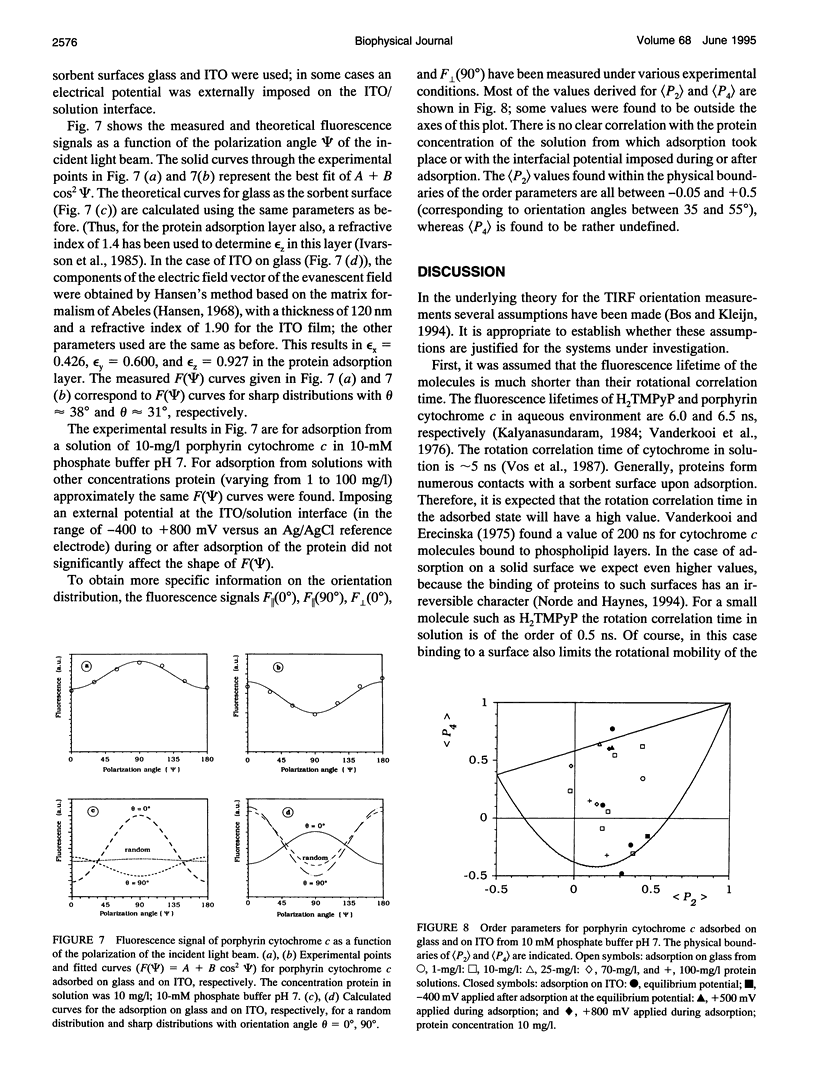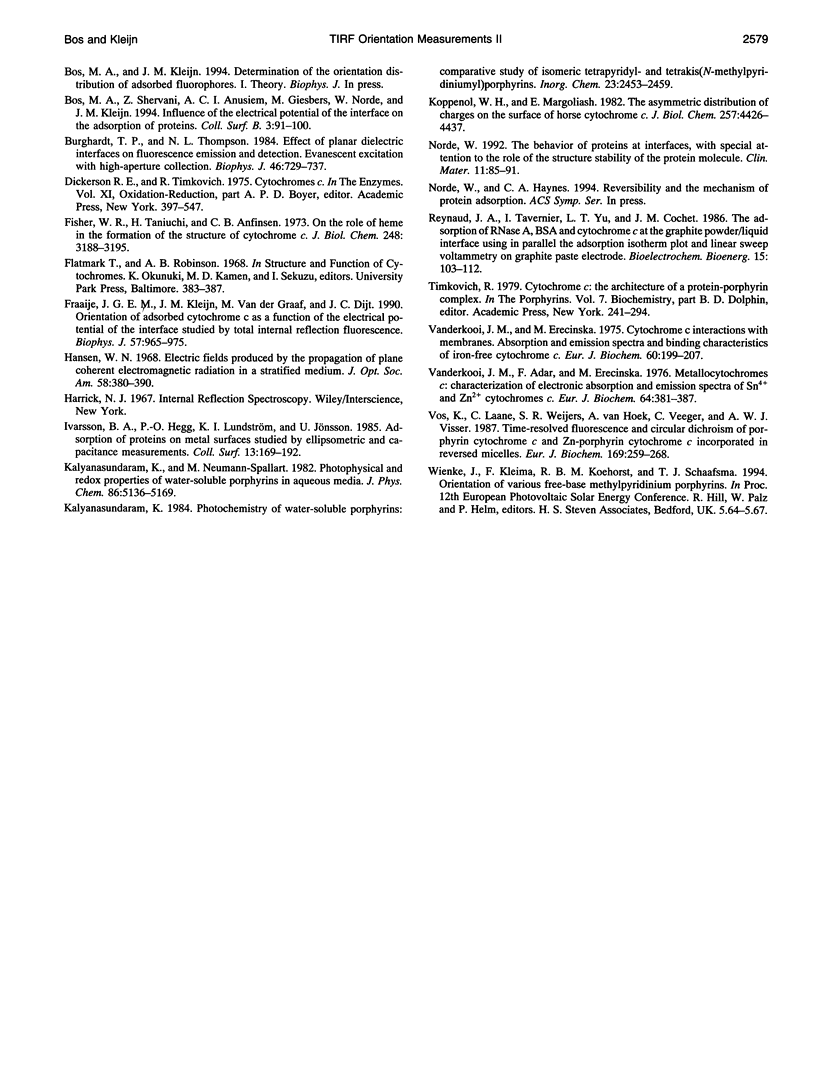Abstract
The theory for determination of the orientation of adsorbed fluorescent molecules using total internal reflection fluorescence, as explained in part I of this series, is illustrated by measurements on adsorbed tetramethylpyridinium porphyrin (H2TMPyP) and porphyrin cytochrome c molecules. The results are encouraging, although for porphyrin cytochrome c the scatter in the obtained order parameters is substantial. For H2TMPyP molecules adsorbed on glass the orientation distribution depends on the solution concentration. At low concentration, the H2TMPyP molecules are more or less randomly oriented, whereas at high concentrations a broad distribution around an angle of 46 degrees between the porphyrin plane and surface was found. For cytochrome c adsorbed on glass and indium tin oxide it was impossible to interpret the data in terms of orientation distributions because of the scatter in the results. The total fluorescence as a function of the polarization angle psi of the incident light beam corresponds to an average angle between the porphyrin group and the surface of 30 degrees-40 degrees. Despite the strong electric dipole moment of the protein, the orientation distribution seems to be independent on the (imposed) electrical potential of the interface.
Full text
PDF






Selected References
These references are in PubMed. This may not be the complete list of references from this article.
- Burghardt T. P., Thompson N. L. Effect of planar dielectric interfaces on fluorescence emission and detection. Evanescent excitation with high-aperture collection. Biophys J. 1984 Dec;46(6):729–737. doi: 10.1016/S0006-3495(84)84071-0. [DOI] [PMC free article] [PubMed] [Google Scholar]
- Fisher W. R., Taniuchi H., Anfinsen C. B. On the role of heme in the formation of the structure of cytochrome c. J Biol Chem. 1973 May 10;248(9):3188–3195. [PubMed] [Google Scholar]
- Fraaije J. G., Kleijn J. M., van der Graaf M., Dijt J. C. Orientation of adsorbed cytochrome c as a function of the electrical potential of the interface studied by total internal reflection fluorescence. Biophys J. 1990 May;57(5):965–975. doi: 10.1016/S0006-3495(90)82616-3. [DOI] [PMC free article] [PubMed] [Google Scholar]
- Koppenol W. H., Margoliash E. The asymmetric distribution of charges on the surface of horse cytochrome c. Functional implications. J Biol Chem. 1982 Apr 25;257(8):4426–4437. [PubMed] [Google Scholar]
- Vanderkooi J. M., Adar F., Erecińska M. Metallocytochromes c: characterization of electronic absorption and emission spectra of Sn4+ and Zn2+ cytochromes c. Eur J Biochem. 1976 May 1;64(2):381–387. doi: 10.1111/j.1432-1033.1976.tb10312.x. [DOI] [PubMed] [Google Scholar]
- Vanderkooi J. M., Erecińska M. Cytochrome c interaction with membranes. Absorption and emission spectra and binding characteristics of iron-free cytochrome c. Eur J Biochem. 1975 Dec 1;60(1):199–207. doi: 10.1111/j.1432-1033.1975.tb20992.x. [DOI] [PubMed] [Google Scholar]
- Vos K., Laane C., Weijers S. R., Van Hoek A., Veeger C., Visser A. J. Time-resolved fluorescence and circular dichroism of porphyrin cytochrome c and Zn-porphyrin cytochrome c incorporated in reversed micelles. Eur J Biochem. 1987 Dec 1;169(2):259–268. doi: 10.1111/j.1432-1033.1987.tb13606.x. [DOI] [PubMed] [Google Scholar]


